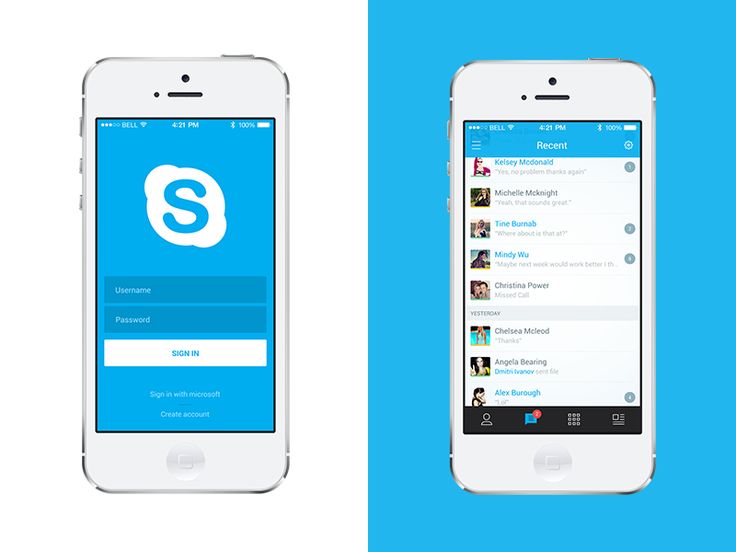According to Statista’s 2016 reports, the global mobile app revenue is estimated to cross 188 billion US dollars by 2020. It is more than double the global mobile app revenue recorded in 2016.
The lucrative mobile app economy is attracting multiple industry businesses to establish a mobile-first online presence. However, it is essential to make an informed decision to choose an industry-appropriate design for effective mobile apps. It is critical for providers of mobile app design services to thoroughly evaluate different design methodologies for maximum user adoption.
This blog post discusses the attributes and significance of three major variants in mobile app designs and their respective use-cases.
1) Native Mobile App Design
Definition- Mobile apps that are specifically built for a certain operating system, such as Android or iOS, are known as native mobile apps. A native app for an Android device is coded with a different programming language as compared to an iOS app. Spotify and Netflix are examples of well-performing native apps.

Telecommunication mobile app Skype is not only available for different operating systems, but also for desktop, tablet, Xbox, and Alexa users.
Key Features-
1) Native apps can use one or more features of the mobile device. For instance, Instagram can use your contact list, camera, microphone, and other mobile features.
2) The UI/UX of a single native app supports the layout of different platforms. It enables Android and iOS users to experience an app that is exclusively built according to their needs and device functionality.
3) Native apps support a robust architecture and provide consistent user experience across platforms. If built correctly, the possibility of a native app to fall in performance or functionality is low.
Reasons to consider Native Apps for your business
1) Heavy Cost and maintenance
Although native apps provide seamless user experience, they require significant investment. A business requires professional UI UX design services to build and maintain a native app. Therefore, it is advisable for businesses to first understand their user base across platforms and their digital requirements. It will enable them to ratio2) Hybrid Mobile App Designnalize their decision and allocate budget accordingly.
2) Responsiveness and Offline Functioning
Native apps provide the most responsive user experience compared to other options. In 2012, Facebook replaced its hybrid app with a purely native one which significantly improved its speed and efficiency. Moreover, native apps can work even without internet connectivity. Competent agencies who provide user experience design services place an emphasis on offline functioning for maximum user engagement without interruptions.
2) Hybrid Mobile App Design
Definition- Hybrid apps are a combination of native apps and mobile sites. Although their appearance is similar to other apps, they are built like web pages using HTML. Since the programming languages in hybrid apps are wrapped inside native applications, the UI design appears similar to native apps.
Key Features-
1) Similar to native apps, hybrid apps also have essential mobile features, such as GPS, contact list, compass, and others.
2) In contrast to native apps, hybrid apps involve a much easier design process. Various online tools such as Ionic, PhoneGap, Sencha Space, etc. are specifically used to build hybrid apps.
3) Moreover, a hybrid app uses a single interface for cross-platform presence. It is an appealing feature for start-ups and small organizations to build apps with minimal resources and low maintenance efforts.
Reasons to consider Hybrid Apps for your businesses
1) Quick Iterations
Last year, Airbnb decided to replace its React Native app infrastructure with native infrastructure in hybrid JavaScript/native apps. With a cross-platform app, Airbnb aims to create a “fast, feature-rich, and rapidly iterative application”.

As compared to native apps, it is a lot easier to implement technical changes in hybrid apps. Therefore, providers of UI UX design services prefer building hybrid apps to accelerate the design process.
2) Platform Independence
Platform independence means a set of changes can be easily implemented across all the platforms in one go. It enables cost-cutting of extra resources and professional tools that are required to push changes in a native app.
3) Flutter Mobile App Design
Definition- Flutter is a Google product to facilitate building both native and hybrid mobile applications. Dart is a Google-developed programming language that is used by Flutter. The Flutter platform was launched in March 2018 as an open source mobile app development framework.
Key Features-
1) Like any other native or hybrid app, the apps developed using Flutter are also in Google and Apple app stores.
2) It is comparatively easier to understand the underlying programming language of Flutter, i.e. Dart. Since the language is quite similar to Java and C#, it becomes easier for businesses to deploy developers and designers to use Flutter.
Reasons to consider Flutter Apps for your businesses
1) Built-in Material Components & Cupertino Widgets
Google Material and Cupertino are visual design tools and widgets that enhance digital designs. The features enable businesses to provide quality user experience by maintaining the visual integrity of the design.
2) Animation Library
On-scroll animation is one of the latest mobile app design trends in 2019. Flutter has a built-in animation library that enables UX designers to include a tint of animation to mobile app designs.
Native and Hybrid Mobile App Design Services for Global Businesses
We, at Oodles Studio, ideate and build engaging digital designs for websites, mobile sites, and mobile applications. Our mobile app design services are available for Android, iOS mobiles, smart TVs, wearable gadgets, and other smart devices. Talk to our UX UI Design team to know more about our UX design strategies and process.



